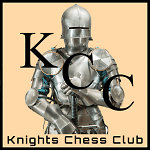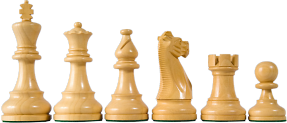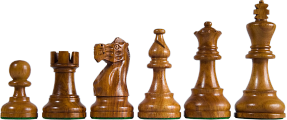
Knights Chess Club
Welcome To All, Young And Old


Facts: Chess And Education
Chess is part of the curricula in nearly 30 countries. In Venezuela, Iceland, Russia and other countries, chess is a subject in all public schools. [8]
In Vancouver, BC, the Math and Chess Learning Center, recognizing the correlation between chess playing and math skills development, has developed a series of workbooks to assist Canadian students in math. [42]
In Harriet Geithmann's article ``Strobeck, Home of Chess,';' The National Geographic Magazine, May 1931, pp. 637-652, we find that this medieval village in the Harz Mountains of Germany has taught the royal game in its public schools for years. Chess began in Strobeck in 1011. [37]
In "Chessmen Come to Life in Marostica,'' The National Geographic Magazine, November 1956, by Alexander Taylor, pp. 658-668, we see an Italian town reviving a romantic legend of the Middle Ages, in which suitors played chess for the hand of a lady fair. [43]
The mathematics curriculum in New Brunswick, Canada is a text series called Challenging Mathematics, which uses chess to teach logic and problem solving from grades 2 to 7. Using this curriculum, the average problem-solving score of pupils in the province increased from 62% to 81%. The Province of Quebec, where the program was first introduced, has the highest math grades in Canada, and Canada scores better than the USA on international mathematics exams. [19], [20], [40]
Former U.S. Secretary of Education Terrell Bell encouraged knowledge of chess as a way to develop a preschooler's intellect and academic readiness. [39]
The State of New Jersey passed a bill legitimizing chess as a unit of instruction within the elementary school curriculum. On December 17, 1992, New Jersey Governor Jim Florio signed into law a bill to establish chess instruction in public schools. A quote from the bill states ``In countries where chess is offered widely in schools, students exhibit excellence in the ability to recognize complex patterns and consequently excel in math and science...'' [41]
Funding for chess activity is available under the ``Educate America Act'' (Goals 2000), Public Law 103-227, Section 308.b.2.E.: ``Supporting innovative and proven methods of enhancing a teacher's ability to identify student learning needs and motivating students to develop higher order thinking skills, discipline, and creative resolution methods.'' The original wording of this section included ``such as chess'' and passed Senate that way, but the phrase was deleted later in Conference Committee. [19]
NOTES
- Robert Ferguson, “Chess in Education Research Summary,” paper presented at the Chess in Education A Wise Move Conference at the Borough of Manhattan Community College, January 12-13,1995.
- Albert Frank, “Chess and Aptitudes,” doctoral dissertation, 1974, Trans. Stanley Epstein.
- Johan Christiaen, “Chess and Cognitive Development,” doctoral dissertation, 1976, Trans. Stanley Epstein.
- Donna Nurse, “Chess & Math Add Up,” Teach, May/June 1995, p. 15, cites Yee Wang Fung’s
- Robert Ferguson, “Teaching the Fourth ‘R’ (Reasoning) through Chess,” School Mates, 1(1), 1983, p. 3.
- Robert Ferguson, “Developing Critical and Creative Thinking through Chess,” report on ESEA Title IV-C project presented at the annual conference of the Pennsylvania Association for Gifted Education, Pittsburgh, Pennsylvania, April 11-12, 1986.
- Robert Ferguson, “Teaching the Fourth ‘R’ (Reflective Reasoning) through Chess,” doctoral dissertation, 1994.
- Isaac linder, “Chess, a Subject Taught at School,” Sputnik: Digest of the Soviet Press, June 1990, pp. 164-166.
- Rafael Tudela, “Learning to Think Project,” Commission for Chess in Schools, 1984, Annex pp. 1-2.
Material excerpted or adapted from the Illowa Chess Club: TEACHER'S GUIDE: RESEARCH AND BENEFITS OF CHESS by Dr. Robert C. Ferguson






